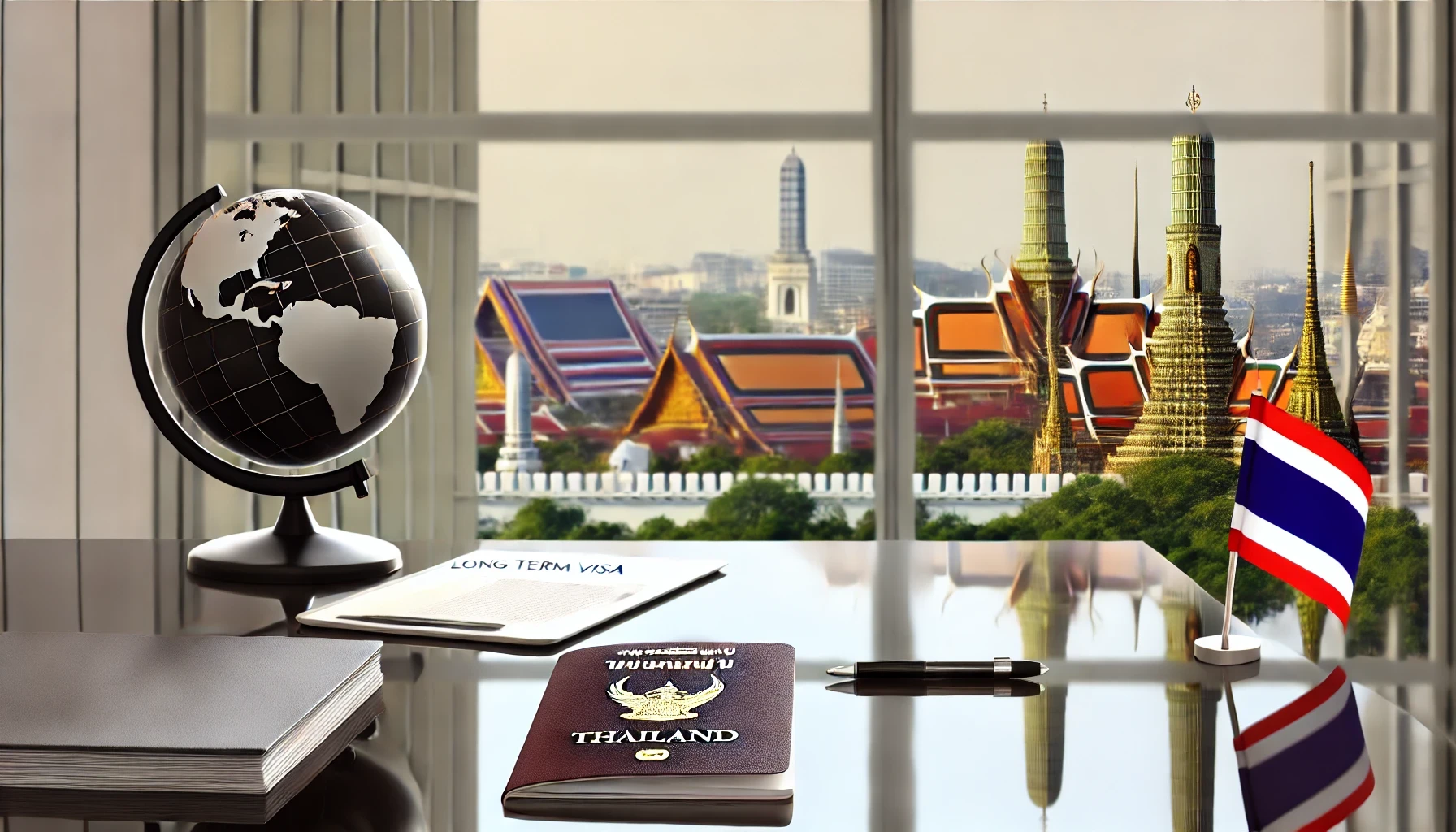Long Term Visa

Thailand Long-Term Visa: Your Guide to Living and Working in Thailand
Thailand offers a variety of long-term visa options to accommodate different types of residents, including retirees, skilled professionals, investors, and digital nomads. These visas provide an opportunity to enjoy the country’s rich culture, favorable business climate, and scenic landscapes.
1. Types of Long-Term Visas Available in Thailand
- Long-Term Resident (LTR) Visa: Tailored for high-income individuals, retirees, skilled professionals, and digital nomads seeking a long-term stay with benefits like streamlined processes and multiple re-entry options.
- Retirement Visa (Non-Immigrant O-A and O-X): Available for those aged 50 and above, allowing a one-year (O-A) or up to ten-year (O-X) renewable stay.
- Smart Visa: Specifically designed for investors, entrepreneurs, and professionals working in industries like technology, innovation, and research. Offers work permit exemptions and simplified reporting requirements.
- Business Visa (Non-Immigrant B): Suitable for individuals working or conducting business in Thailand, typically valid for one year with possibilities for extension.
2. Eligibility Criteria for Long-Term Visas
- LTR Visa: Applicants should meet specific income and investment thresholds, or have specialized skills.
- Retirement Visa: Requires proof of financial stability through savings or monthly pension income.
- Smart Visa: Applicants must have qualifications in targeted industries or demonstrate significant investments in Thailand.
- Business Visa: Sponsored by a Thai company or supported by a comprehensive business plan.
3. How to Apply
- Step 1: Prepare Documentation: Collect necessary documents such as a valid passport, financial statements, medical certificates, and evidence of income or investments.
- Step 2: Submit Your Application: Applications can be submitted online through the official Thai e-visa system or at local Thai embassies or consulates.
- Step 3: Processing and Approval: The standard processing period is 2-4 weeks, depending on the type of visa.
- Step 4: Visa Extensions: Visit the Thai Immigration Office for extensions, which vary by visa type.
For detailed application procedures and to begin your visa process, visit Thailand’s official e-visa website.
4. Advantages of Holding a Long-Term Visa in Thailand
- Extended Stay: Enjoy uninterrupted residency for up to 10 years without frequent renewals.
- Multiple Re-entry Privileges: Allows seamless travel in and out of the country.
- Simplified Business Operations: Visa holders can benefit from facilitated work permits and business integration.
- Tax Benefits: Some visas offer favorable tax conditions for residents.
5. Essential Considerations
- Health Insurance: Mandatory for certain visa types like retirement visas to cover medical expenses.
- 90-Day Reporting: All long-term residents must report their current address to the Immigration Bureau every 90 days.
- Family Inclusion: Many long-term visas allow spouses and dependents to be included under the primary holder’s visa.
6. How to Maintain Visa Status
- 90-Day Reporting: Required by the Immigration Bureau to confirm residence details.
- Annual Renewals or Extensions: Ensure all criteria are met and submit renewal applications as needed.
Thailand’s range of long-term visas provides flexible options for various needs, whether you’re retiring, working, or investing. By understanding the visa types and application process, you can make the most of your long-term stay in this vibrant and welcoming country.
